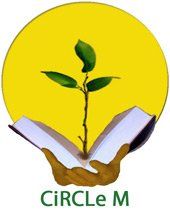Statistics Tell Their Own Story – by Joyce Sasse
I wonder what all the statistics gathered in these Covid-19 months will tell historians in the year 2120? While tabulating information charts gathered now may seem to be a nuisance, the information can be of utmost importance to succeeding generations. Let me give an example.
When Dr. Olive Dickason visited Pincher Creek’s Cross Cultural Conference twenty years ago, she told us about her study of statistics that had been written in the 1700s. These were detailed manifests of goods delivered by French-based ships to the Fortress at Louisbourg (Cape Breton on the North Atlantic). Food and building materials were among the supplies being shipped from over-seas.
By examining these manifests and comparing what she knew about the oral historical stories told by Indigenous people in the region, she was able to prove the validity of their stories … And that information had to make Canadians re-think what they understood about what Native story-tellers said. Until then, those who immigrated to the “New World” from “Over-seas” thought the people who they “discovered” in North American to be “Savages”. But the work done by Dr. Dickason was proof that “thriving, productive Indigenous peoples had survived for centuries in North America before the European’s had arrived”.
We are told that her statistical work proved to Canadians that they had been wrong in their interpretation of Aboriginal history. They had to think of the Native and Metis culture in a totally different way.
A story of the book Champlain’s Dream by David Hackett Fischer (about the explorer Champlain’s ventures through-out the St. Lawrence River, and far beyond) is another example of how essential statistical account keeping was in the 1600s.
There is another detail to Olive Dickason’s autobiography that is important to her “back-story”. Her mother intentionally neglected informing Olive that her father was Aboriginal. Olive was successful as an outstanding journalist who used her skills in writing and research before she discovered her Metis heritage. But it was while she was working among the Indian artifacts in Ottawa’s National Gallery that she said “The pieces spoke to me. I felt I knew all about them. I guess that is what they refer to as racial memory”.
That sensitivity fueled her passion to enter University and do her scholarly Louisbourg documentation. She continued her writing. In addition to “ The Myth of the Savage ”, she wrote “ Canada’s First Peoples ” (a history of Founding Peoples). A wonderful short film “ Introducing Dr. Olive Dickason ” can be found on You Tube.
Her life-long achievements are reminders of how essential statistics can be is teaching us vital vibrant historical lessons.
Thanks be for such insights shared!
